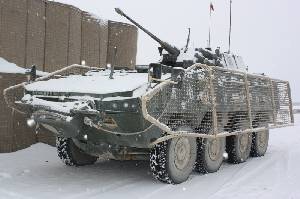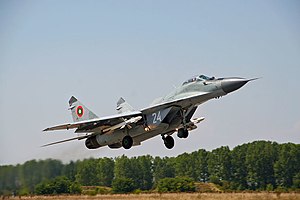
Experience in the use of helicopters in ATO
An analysis of the current military-political situation in the world gives reason to conclude that the threat of war, whether in the form of war or armed conflict, resulting in open aggression, both against Ukraine and against other countries, is relevant. date, as evidenced by the hidden aggression of the Russian Federation in the east of Ukraine. The experience of armed conflicts in recent years also shows that in every local war and conflict involving the armed forces, aviation of the ground forces took part. There is an indisputable tendency towards an increase in its role in combat operations, which affects the nature of the combat use of ground forces in these conflicts.
Considering this issue historically, after the Second World War, the Army Air Forces (AAF) clearly marked their participation in local wars, starting with the Korean War (1950-53). In subsequent years, he played an increasingly important role in the Vietnam War (1959-1973), the Israeli-Arab conflicts in the Middle East in 1967 and 1973. and in the war in Afghanistan (1979-1989). They were followed by the Persian Gulf War (1990-1991), in which more than 1600 coalition helicopters took part in operations against Iraq, the war in Chechnya (1999-2000), the war in Afghanistan (since 2001) and Iraq. (since 2003).b.). All of them showed a steady increase in the importance of the LVL, and in particular the helicopter, and its use not only for transporting people and equipment, but also in almost the full range of combat missions to be solved (fire support for tactical combat groups, disorganization of the enemy command and control system, reconnaissance, road patrolling). and covering columns, etc.).
LWL in ATO
Unfortunately, wars and conflicts are still going on, and further fires of armed conflicts are flaring up almost in the center of Europe - in Ukraine. The Air Force of the Ground Forces of the Armed Forces of Ukraine took part in the anti-terrorist operation (Ukrainian Anti-terrorist operation, ATO) from its first days, i.e. in the spring of 2014. At the initial stage of operations, its tasks were mainly to conduct reconnaissance along the state border and transport people and goods. Later, after the transition of the conflict into an armed phase, more and more tasks began to be of a combat nature: evacuation of the wounded and sick, air support for ground forces, strikes against enemy manpower and equipment, the transfer of special forces groups, landing aircraft, etc.
At the first stage of the armed conflict, due to weak opposition from the enemy, tasks were carried out at altitudes of 50-300 m, without anti-aircraft and anti-missile maneuvers. Although many of the helicopter crew members had combat experience in the war in Afghanistan and local wars and peacekeeping operations in other countries, over time they proved to be of little use in the new environment. In March-April 2014, the skills acquired while flying in difficult conditions and the skills acquired during participation in peacekeeping operations were sufficient to effectively carry out the assigned tasks with a relatively low intensity of operations, and in subsequent situations the situation began to improve. difficult.
Over time, the ATO command began to set rash, and partially impossible for technical reasons, tasks, tasks that did not correspond to the capabilities of the helicopters at the disposal of the flight crew, and mistakes were also made in planning the time for completing the task. when setting tasks that entailed the loss of people and equipment. The shock was the first shots in the helicopters returning from the mission, or the destruction - however, on the ground - of the first Mi-8 helicopter, but none of the aviators guessed that the war was about to begin. In their minds, this began on May 2, 2014, when Mi-24 helicopters were shot down and two crews died at once, and the Mi-8 helicopter, which landed near the place of their fall, with the task of evacuating the surviving crew members and the bodies of the dead, was found under a hurricane fire. The commander of the search and rescue group was wounded in the battle. However, the morale of the flight personnel was far from falling, and, despite a sharp change in the situation, they did not stop performing their tasks. Both the command and the personnel understood that the enemy was well prepared, skillfully uses weapons and has the latest weapons.
At the end of the spring of 2014, it was already possible to formulate statements about the specifics of the conflict in eastern Ukraine: the absence of a strictly defined line of contact, the use of densely populated areas by terrorists as cover, the movement of the enemy throughout the entire area of hostilities, including controlled areas, without any obstacles from security forces, as well as the great hostility of the local population towards Ukraine and the forces loyal to the government in Kyiv (separatism). Thanks to the support of the Russian Federation, illegal armed formations began to appear, including those equipped with air defense equipment. As a result, the number of helicopters shot down and damaged by MANPADS and small-caliber artillery of the enemy began to increase.
The composition of anti-aircraft weapons in the ATO region includes the latest short-range and short-range weapons that have recently entered service with the Armed Forces of the Russian Federation. In this context, it is necessary, in particular, to replace the 9K333 Wierba portable kits equipped with a three-band infrared homing head (ultraviolet, near and medium infrared), which are distinguished by greater sensitivity and range of detection and interception of targets and are practically immune to interference (automatic target selection against the background of interference) , or self-propelled, artillery -96K6 Pantsir-S1 anti-aircraft missile systems. The latter has: a three-coordinate target detection radar with a semi-active phased array antenna; two-coordinate (millimeter-centimeter range) radar station for tracking and targeting, which allows flexible use of each range of the operating range; optical-electronic channels for tracking targets and missiles operating in different ranges; It is also highly resistant to any kind of interference due to the integration into one system of radar and optoelectronic sensors operating in the following ranges: decimeter, centimeter, millimeter and infrared.

